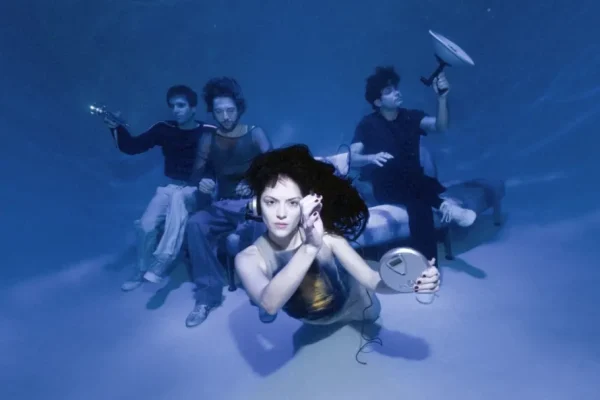Video Games: A brief history of graphics
https://unsplash.com/photos/O__rEvZifCw
Early video game graphics used triangular shapes to build images.
Graphics play a huge role in video games. A poorly designed game nowadays will not even be acknowledged. Some solely focus on the graphics, however, and manage to be successful. Journey, for example, is a roughly six-hour play that takes you on a mesmerizing adventure through countless, articulately put-together scenes. Red Dead Redemption is a role-playing game (RPG) with cinematic cut scenes that coax you into wanting to be a part of the world. No matter the form, it seems that video games are something that can reach anyone.
But first, let’s understand the development of graphics. Almost all video game graphics are made up of tiny triangles. The reason behind this is that triangles are the easiest shape to recognize for a computer because of their three points. Four points could suggest a three dimensional object, meaning more rendering, which equates to more time. This is why, as time has gone on, improving computer rendering allows for better graphics.
Let’s go back to the beginning. Tennis for two, popularly known as Pong, is considered the first video game. Most of us can recall this classic game, or at least some variation of it. This was the beginning of a flurry of games based on that simple idea. Although the graphics were lacking in comparison to what we have today, it was still groundbreaking.
According to gameranx, one of the very first examples of detailed facial graphics is Pac-Man. Pac-Man’s face at the time of first release was smooth with opening and closing of his mouth. Jumping forward a couple of years, Nintendo developed Donkey Kong and The Legend of Zelda, along with a few other games. These games were in 2-D, using sprites, which are, according to Wikipedia, “independent objects that are composited together, by hardware, with other elements such as a background.” The detail in these games, although sparse, was the beginning of something greater.
Racing games and fighting games sprouted up around the 1990s, taking the next step forward in the advancement of video game graphics. At the beginning of the 1990s, these games still used sprites; towards the end of the 1990s they slowly shifted to using flatter, blockier textures.
During the 2000s, the backgrounds of video games seemed insignificant to the people. RPGs began popping up more and more. While the background behind these characters was also rapidly improving, the focus shifted to bodies and to making people look real.
Human characters have taken on a big role in games to a point where now designers are creating video games that are populated with characters that are as close to looking like real life as possible.
There have been many approaches to tackling the question, what is the best way to make a video game look real? And the 2000s brought bunches of people ready to figure that out. One notable game, LA Noire, recorded actors’ facial expressions and worked off their faces to construct something that was oddly realistic, yet at the time, video game graphics had not been as good as they are today. So this resulted in incredible movement in the people with a rigid video game background. Other game designers hand-drew each screen to achieve their goal. Most video game developers build each scene on a computer using animation. Whether video game developers chose the harder, but more accurate route LA Noire had taken, or the more traditional at the time, or a mix of each, all were vital to reach where we are today.
The 2010s came with incredible growth for graphics. Today, graphics are better than ever. Their evolution allows for the carefully crafted plot and characters to shine through. Even video games focusing on stylistic characters, like those from Nintendo, are improving their graphics by adding key components of everyday life, such as the movement of wind blowing a character’s hair, dust kicking up when the character runs, and even ray tracing, the act of tracing light pixel of an object, basically recording the way light hits objects and integrating that into video games.
Graphics don’t have to be realistic to improve, however. As for the future of graphics, one of the most promising advancements we’ll be sure it see is advancement in ray tracing and the art of making everything in that on screen world look real.
Ask anyone from our past generation how it felt when they first played the Nintendo. Nothing like that ever existed in video games at the time. Videos games hold a powerful role in our society, they can coax anyone into getting lost in whatever they world you wish and graphics are a huge part in that.
Hi! I’m Morgan! I began to really love writing after I was diagnosed with Chronic Migraines. At one point, crossing my fingers and hoping I was actually...





Bonnie B Ramey • Sep 25, 2019 at 9:08 pm
Mind blowing documentary, not just for gamers and developers but also for graphic designers hudgames. Thank you.